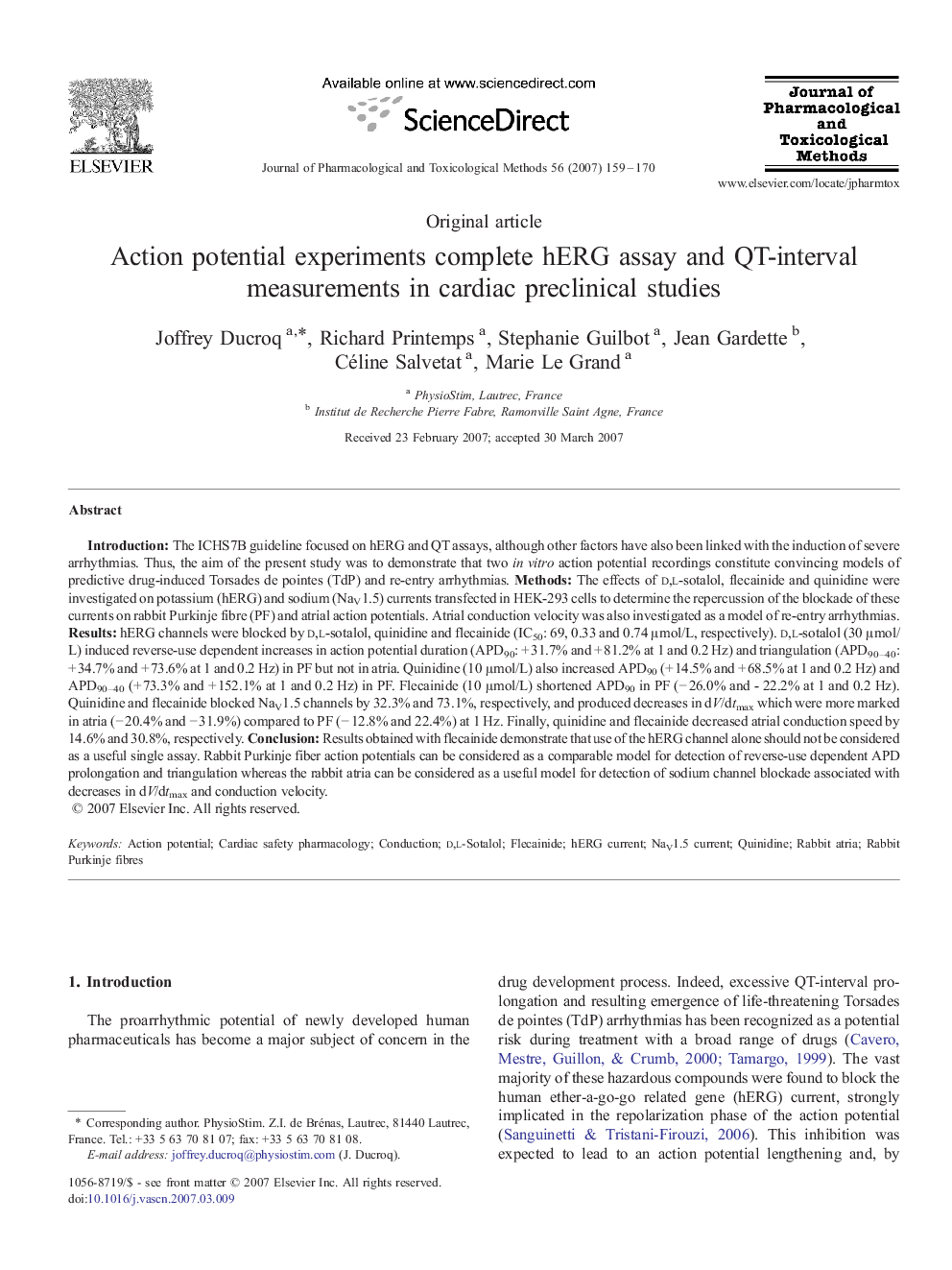| Article ID | Journal | Published Year | Pages | File Type |
|---|---|---|---|---|
| 2549781 | Journal of Pharmacological and Toxicological Methods | 2007 | 12 Pages |
IntroductionThe ICHS7B guideline focused on hERG and QT assays, although other factors have also been linked with the induction of severe arrhythmias. Thus, the aim of the present study was to demonstrate that two in vitro action potential recordings constitute convincing models of predictive drug-induced Torsades de pointes (TdP) and re-entry arrhythmias.MethodsThe effects of d,l-sotalol, flecainide and quinidine were investigated on potassium (hERG) and sodium (NaV1.5) currents transfected in HEK-293 cells to determine the repercussion of the blockade of these currents on rabbit Purkinje fibre (PF) and atrial action potentials. Atrial conduction velocity was also investigated as a model of re-entry arrhythmias.ResultshERG channels were blocked by d,l-sotalol, quinidine and flecainide (IC50: 69, 0.33 and 0.74 μmol/L, respectively). d,l-sotalol (30 μmol/L) induced reverse-use dependent increases in action potential duration (APD90: + 31.7% and + 81.2% at 1 and 0.2 Hz) and triangulation (APD90–40: + 34.7% and + 73.6% at 1 and 0.2 Hz) in PF but not in atria. Quinidine (10 μmol/L) also increased APD90 (+ 14.5% and + 68.5% at 1 and 0.2 Hz) and APD90–40 (+ 73.3% and + 152.1% at 1 and 0.2 Hz) in PF. Flecainide (10 μmol/L) shortened APD90 in PF (− 26.0% and - 22.2% at 1 and 0.2 Hz). Quinidine and flecainide blocked NaV1.5 channels by 32.3% and 73.1%, respectively, and produced decreases in dV/dtmax which were more marked in atria (− 20.4% and − 31.9%) compared to PF (− 12.8% and 22.4%) at 1 Hz. Finally, quinidine and flecainide decreased atrial conduction speed by 14.6% and 30.8%, respectively.ConclusionResults obtained with flecainide demonstrate that use of the hERG channel alone should not be considered as a useful single assay. Rabbit Purkinje fiber action potentials can be considered as a comparable model for detection of reverse-use dependent APD prolongation and triangulation whereas the rabbit atria can be considered as a useful model for detection of sodium channel blockade associated with decreases in dV/dtmax and conduction velocity.
